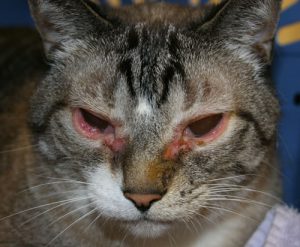Posted
May 06, 2016
Genetics and environmental factors play a large role in pet eye health. Watch for these symptoms:
Nuclear sclerosis
With age, the gradual clouding of your pet’s lens is normal, but it is a good idea to get it checked and confirm the diagnosis with your veterinarian.
- Squinting
- Excessive drainage from the eyes
- Rubbing of eyes
- Swelling around the eyes
- Visible third eyelid
- Change in vision
- Change in eye color
- Cloudy eyes
- Unequal pupil size
- Increased redness of the eyes
Follow these tips for maintaining pet eye health:
- Research your pet’s breed for any predispositions to eye conditions
- Avoid using irritating soaps or sprays near your pet’s eyes
- Gently wipe discharge or mucus out of your pet’s eyes using a clean, damp cotton ball
- When wiping eyes, wipe from the corner and use a different cotton ball for each eye
- Keep hair trimmed around your pet’s eyes so their vision unobstructed and to reduce irritation
- Create an area in your house that is free of artificial light
- Allow your pet access to natural light through windows or being outside
- If your pet is often outdoors, make sure it has access to shelter and a shady spot
- Don’t let your dog stick its head out the window while driving. The wind can dry its eyes out, leading to irritation. Debris and insects may also fly into its eyes, causing pain and injury. Try rolling windows down partway
- Make sure your pet has a balanced diet, including important antioxidants that support eye health

Common eye disorders in dogs:
- Abnormal eyelid conformation
- Eyelash abnormalities
- Conjunctivitis
- Dry eye
- Cherry eye
- Corneal ulcerations-glaucoma
- Cataracts
- Retinal disease

Common eye disorders in cats:
- Conjunctivitis
- Keratitis
- Corneal ulcerations
- Corneal sequestrums
- Glaucoma
- Retinal disease



